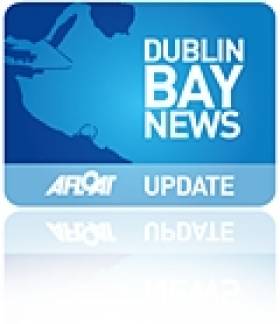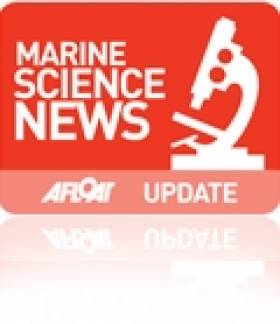Displaying items by tag: Cosantoir Bradan
US Navy Dock Landing Ship Departs Dublin Bay’s Shipping Scene
#US NAVYSHIP DEPARTS – At lunchtime the United States Navy dock-landing ship USS Fort McHenry (LSD-43) departed Dublin Port, after her visit for American Football Week, writes Jehan Ashmore.
Waiting out in Dublin Bay was the Irish Naval Service 'flagship' L.E. Eithne (P31) which had gone to anchorage having also stayed in the capital concurrently to the naval visitor. As USS Fort McHenry headed out on an easterly direction L.E. Eithne got underway too and proceeded southbound.
Other shipping activity in the bay included Seatruck Ferries newbuild freight-only ferry, Seatruck Progress, the ro-ro vessel serves on the Dublin-Liverpool route. Also at anchorage was Broström Tankers coastal tanker Bro Genius (2003/4,107grt).
Further out in the bay at the North Burford Buoy was Dublin Port Company's multi-cat Rosbeg, the workboat tender craft performs a wide variety of duties inside and outside the port, from cleaning the river to quay maintenance, bed levelling and buoy-handling.
Closer to shore, nearer to Dun Laoghaire Harbour was the cutter Cosantoir Bradan (meaning Salmon Defender) which as previously reported is on charter from the Central Fisheries Board to the Geological Survey of Ireland (GSI). They are using the cutter in conjunction with their RV Keary for survey work, including bottom surveying.
RV Keary attended the Dublin Tall Ships Races Festival, where she was moored in Grand Canal Dock which was also occupied by a fleet of narrowboats moored at the marina of the Waterways Visitor Centre.
GSI Charter Central Fisheries Cutter
#RESEARCH VESSEL CHARTER - The Geological Survey of Ireland (GSI) have chartered the Cosantoir Bradan from the Central Fisheries Board
The fisheries patrol cutter is to be used in conjunction with the RV Keary for survey work, including bottom survey of all coastal regions around Ireland.
The 15m catamaran inshore research vessel is currently undergoing modifications and refurbishing works at Arklow Marine Services yard.






























































